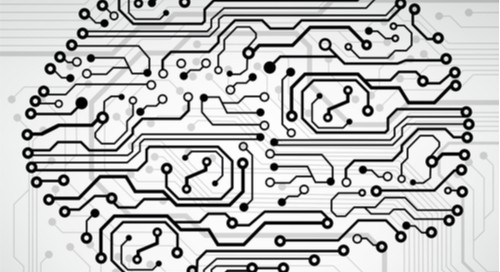PCB Design Software and Electronics Design News for PCB designers,
electronics engineers and makers of all kind, visit resources.altium.com and altium.com
Jan 23
.
High-Speed PCB Design Principles: Keep Traces Short and Direct

Your signals travel at the speed of light, and so does their EMI.
I never really believed in the idea of “less is more” until I experienced it for myself at a cookout with some friends. I was the “grillmeister” which meant I was in charge of seasoning and grilling the steaks. I decided to go with a simple salt and pepper seasoning, and being a salt lover, thought that the sky’s the limit. Well, the steaks turned out to be too salty to eat for most of my friends. Salty steak will leave a bad taste in your mouth, and so will a high-speed PCB with lots of long traces. Long, winding, traces on your PCB can increase EMI and cost you in real estate. Practicing “less is more’ by keeping traces short and direct will ensure that no one finds your designs unpalatable.
Long Traces Increase EMI Risk
As you know, high-speed PCBs can often have issues with EMI. This EMI risk can come from long traces that form transmitting or receiving antennas. Longer traces also cover more distance, which increases the chances that sensitive circuits are affected along the way. Using short traces that take direct paths will help reduce EMI risk from both antennas and trace proximity.
Much like how no one intentionally over-salts a steak, no one intentionally routes a trace so that it is an antenna for EMI. Maybe a high frequency altered a capacitor’s impedance, or a return current made an unexpected loop in the ground plane. Whatever the reason, the best way to mitigate antenna radiation is to shorten traces. Antennas can transmit or receive, so traces in both “noisy” and “quiet” circuits should be shortened. A smaller antenna will always radiate or receive less than a larger antenna.
Traces themselves aren’t the only things on the PCB that can radiate EMI. Gaps in the ground plane will also act as antennas when crossed by a trace. Keep traces short and direct, but not at the cost of crossing gaps in the ground plane.

A transcontinental trace would definitely be too long.
Long Traces Cost more
The longer the trace, the more real estate it will take up. Less trace means more money.
PCB designers are always being pushed to make things smaller, so I’ll add to the problem by pushing you to make traces shorter. Not only will the trace itself take up space, but it will also require more space for clearance around the trace. Your company’s accountants might already be, as the kids say, “salty.” Don’t oversalt them by making them pay for an excessively large PCB.

Trace Direct and Think before you route.
How to Shorten Traces
The best way to shorten high-speed trace length is to carefully lay out your PCB. Keep high-speed systems near each other and keep receivers near their respective inputs.
A good PCB layout can help solve problems before they even happen. Setting up your layout so that high-speed systems are close to one another will allow you to initiate your design with short trace lengths. It is especially important to keep the signal input to receiver path as short as possible, as this line can inject the most “noise” into a system. Additionally, keeping high-speed components in close quarters will lessen the effect of any radiated EMI on any other circuits. Close the gap before drawing the first trace.
These design principles may be almost common sense, but implementing them can be tiresome. Fortunately, your PCB design software can help you. Try color coding your high-speed systems to help keep track of components and traces. Software with good trace routing features will also make it easy for you to route, or reroute, traces to the shortest possible path. It just so happens that Altium Designer already has documentation showing how to color code components, and how to arrange traces.
After that “less is more” cookout fiasco, I’ve been much more careful when seasoning steaks. Learn from my mistakes and apply “less is more” to your high-speed PCB, before long traces leave a bad taste in your mouth. Trace direct the right way with expert tools and resources.
A good PCB manufacture can let you make your design dreams a reality. Whether you’re a first-time designer with big ideas for the next great gadget, or an experienced engineer looking to refine your workflow, Juvtmall is better choice for you.
#Juvtmall #PCB #PCBA #hardware
 USD
USD EUR
EUR GBP
GBP CAD
CAD AUD
AUD JPY
JPY
